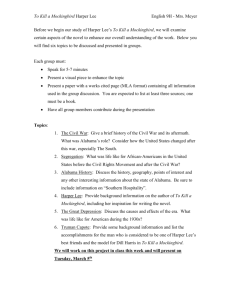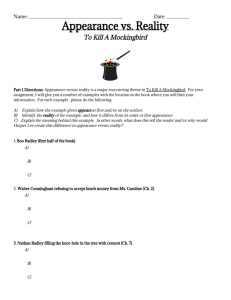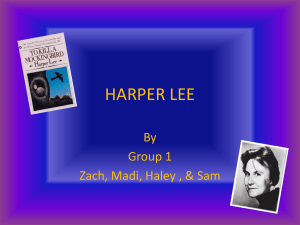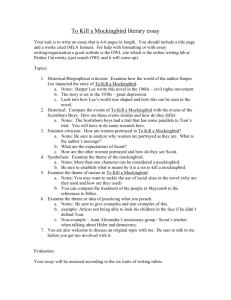Document 9746567
advertisement
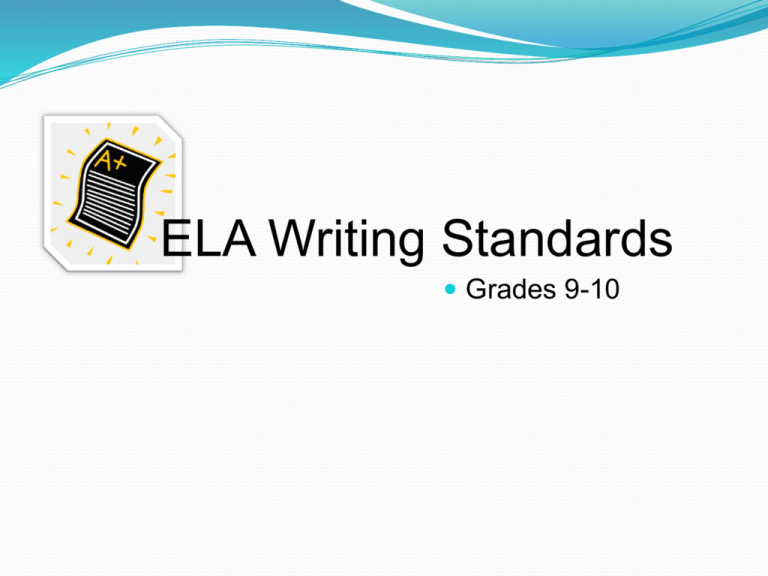
ELA Writing Standards Grades 9-10 Standard: CCSS.ELA-Literacy.W.9-10.2 Write informative/explanatory texts to examine and convey complex ideas, concepts, and information clearly and accurately through the effective selection, organization, and analysis of content. Indicator: CCSS.ELA-Literacy.W.9-10.2a Introduce a topic; organize complex ideas, concepts, and information to make important connections and distinctions; include formatting (e.g., headings), graphics (e.g., figures, tables), and multimedia when useful to aiding comprehension. Objective The student(s) will be able to indicate complex ideas in Harper Lee’s “To Kill a Mockingbird,” by analyzing the content during the week of instructional class time The student will show mastery by writing a response, which will include at least 1 secondary source that the student will compare or contrast with the complex ideas that are presented in “To Kill a Mockingbird.” To Kill a Mocking Bird by Harper Lee •Published in 1960 •A “coming of age” novel • set in a small southern town • 1930’s • • Segregation “separate but equal” Context Lee began writing in 1950’s Published before the peak of the American Civil Rights Movement Brown v. Board of Education (1954) Characters Jean Louise “Scout” Finch – narrator and protagonist Atticus Finch – Scout and Jem’s father; lawyer committed to equality Jeremy Atticus “Jem” Finch – typical American boy Arthur “Boo” Radley – a recluse Bob Ewell – represents the dark side of the south “mockingbird” characters symbolize innocence destroyed by evil (Boo Radley, Tom Robinson) Themes Racial inequality Appearance v. Reality Good v. Evil Moral Education Questions for Thought Discuss the author’s portrayal of the black community and the characters of Calpurnia and Tom Robinson. Are they realistic or idealized? How do Jem and Scout change during the course of the novel? How do they remain the same? Discuss why the author chose to name the novel “To Kill a Mockingbird”. Why shouldn’t you kill a mockingbird? What is the Mockingbird a metaphor for, in regards to the story? Review Sparknotes Video: To Kill a Mockingbird Summary http://www.sparknotes.com/lit/mocking/quiz.html Bibliography Batie, Mike. “Book Cover: To Kill a Mockingbird.” [Online Image] 22 March 2011 <http://www.behance.net/gallery/Book-Cover-To-Kill-aMockingbird/1155169> Lee, Harper. “Harper Lee Bio” [Online] 26 Sep 2013. <http://www.harperlee.com/bio.htm> Sparknotes. “To Kill a Mockingbird.” [Online] 26 Sep 2013 <http://www.sparknotes.com/lit/mocking/> Sparknotes. “Video Sparknotes: Harper Lee’s To Kill a Mockingbird Summary.” [Online Video Clip] 12 Oct 2010 <http://www.youtube.com/watch?v=uqkohqLvClI> Credits This presentation was created using Microsoft PowerPoint. Microsoft is a registered trademark of Microsoft Corporation. This presentation was created by Katie Hamons in EDUC 310, Fall 2013.
